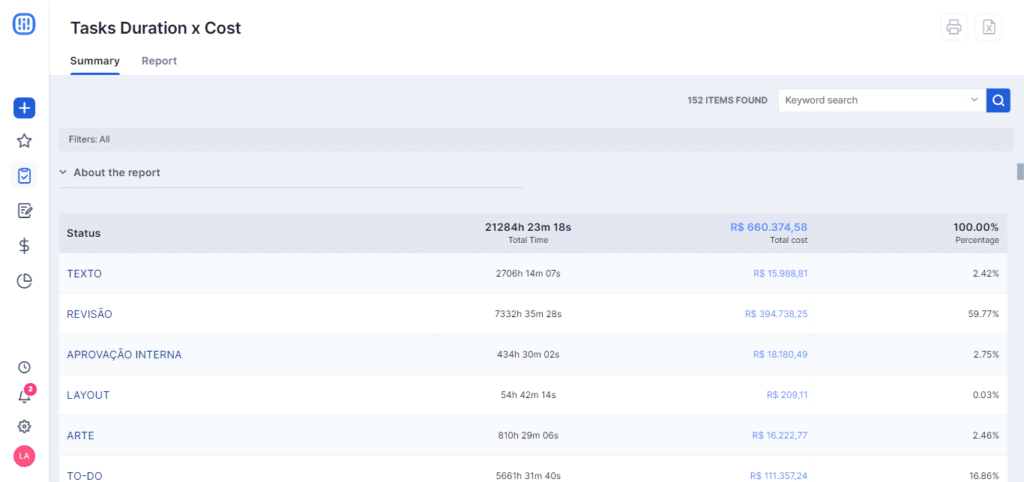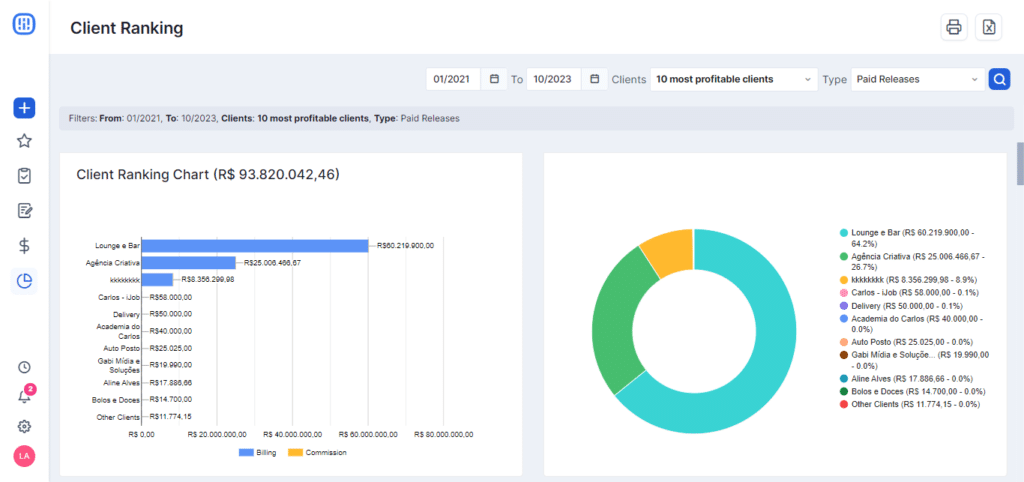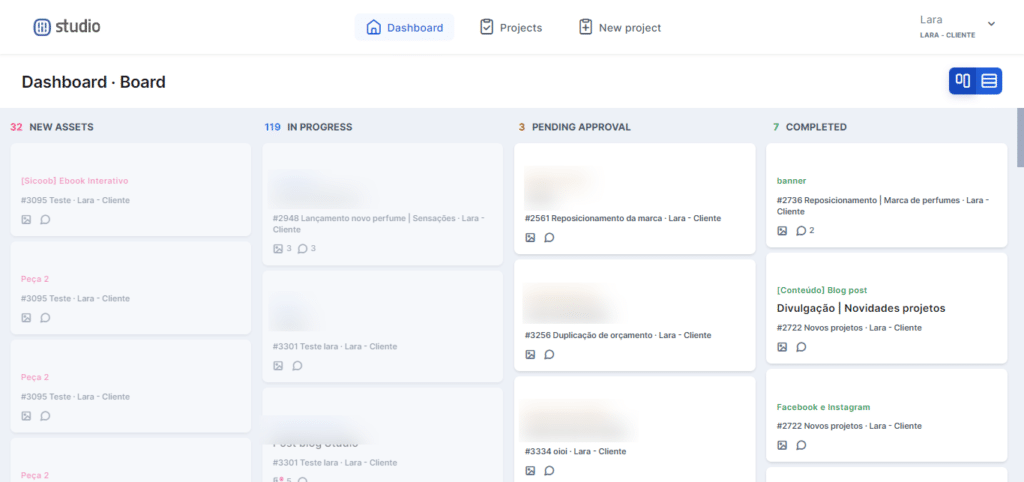
by Admin
Facebook and Instagram set to go ad-free in the UK
Business owners, especially those in the ecommerce sector, could be hit hard by changes Meta is proposing that could allow customers to opt out of ads on sites like Facebook and Instagram. For those who advertise online on either platform, there could be a significant […]
Startups
by Admin
The US will pour £31bn into UK AI – are we ready for it?
US funding is coming towards the UK’s Artificial Intelligence sector like a tidal wave. AI was already the darling of venture capitalists, startups, and big tech companies. But, the recent, massive inflow of US venture capital into AI research in Britain – £31 billion at […]
Startups
by Admin
One million workers to benefit from zero-hours contract ‘ban’
The first changes will be felt from the Employment Rights Bill in April, with reforms becoming law over the next two years in stages. Views on the reforms continue to be polarised, with some business owners, notably recruitment firms, arguing that they are unworkable. Others […]
Startups



Beyond the Spreadsheet – Why Founders Need To Budget For Their Mental Health
by Admin
By Rebecca Sutherland, investor, mentor, and founder of HarbarSix Ltd Entrepreneurship demands balance. You have so many responsibilities to juggle, and often in the beginning, all the decisions fall on you. Spending hours trying to make sense of the numbers accumulated on a boring spreadsheet […]
NewsBy Rebecca Sutherland, investor, mentor, and founder of HarbarSix Ltd
Entrepreneurship demands balance. You have so many responsibilities to juggle, and often in the beginning, all the decisions fall on you. Spending hours trying to make sense of the numbers accumulated on a boring spreadsheet can cause any founder to doubt themselves and create unrealistic expectations.
Budgeting for your business shouldn’t just centre around scaling and reaching that next big milestone; it should be about alleviating unnecessary stresses and developing a plan that your brain can handle. There is so much potential you can tap into, but if your mental wellbeing is neglected, things can quickly spiral. I have broken down why it’s important to budget for your mental health and the key strategies to adopt so you can plan hassle-free.

Treat Mental Health Like a Business Expense
When I launched my first startup, I built the budget like most founders do: line items for product development, marketing, payroll, and legal fees. Everything was meticulously accounted for—except me. My mind, my energy, my health? No pound sign next to those. Not even a footnote.
Mental health isn’t a soft topic. It’s operational infrastructure. If your mind isn’t working, neither is your business. Yet most founders treat their own mental bandwidth as infinite. It’s not. If a key machine in your startup broke down, you’d fix it immediately, no questions asked. But when you, the founder, start showing signs of burnout or decision fatigue, you push through and call it hustle. You wouldn’t expect a product to scale on a server with no bandwidth. So why expect your business to grow when your brain is overloaded?
Start by setting a real budget. Not just time, but money. Include costs like therapy, coaching, gym memberships, and even digital detox retreats. These aren’t luxuries, they’re the equivalent of server maintenance.
Reframe “Time Off” as Strategic Planning
Founders tend to treat rest like a reward for hitting goals. It’s not. It’s a prerequisite for making good decisions.
Take this in: Some of the worst decisions I’ve made – overhiring, bad partnerships, product pivots happened when I was too tired to think straight. Not because the ideas were terrible, but because my brain was.
Block non-negotiable recovery time into your schedule like you would investor calls or product sprints. That means at least one day off per week, regular phone-free hours, and a hard stop in the evening. You’re not lazy for resting. You’re responsible.
Recognise the Hidden Costs of Isolation
Startup life is lonely. Even if you have co-founders, there’s pressure to “have it all together.” But no one does. And pretending you do only makes it worse. To avoid imposter syndrome and establish confidence in yourself, I suggest joining a founder group, talking to a mentor, or starting therapy. Real conversations save you from the mental spiral that comes from thinking you’re the only one struggling. Isolation isn’t a badge of honour, it’s a risk factor.
Be Honest About What’s Sustainable
Forget the stories of founders sleeping in their office and living on protein bars. That might get you a headline, but it won’t get you to year five.
Ask yourself: Can I keep doing this for the next two years? If the answer is no, change the pace before it forces you to. Delegate. Delay. Trim the roadmap. Sustainability isn’t about going slow; it’s about staying in the game long enough to win.
Promote Mental Health in Your Company Culture
Your habits as a founder set the tone. If you glorify overwork, your team will follow. If you prioritise mental health, they’ll feel safe doing the same. Make it clear that wellbeing isn’t optional. Offer mental health benefits. Talk openly about burnout and recovery. Show your team that rest is part of the strategy, not an exception.
Building a startup is hard enough when you’re operating at 100%. Doing it at 50% because you didn’t take care of your mind? That’s how businesses and people break. Mental health isn’t an extra line on your spreadsheet. It’s the foundation under all of it. Budget for it like your company depends on it, because it does.
Rebecca Sutherland Bio
CEO & Founder, HarbarSix
Rebecca Sutherland is the visionary force behind HarbarSix, a hybrid investment fund and business accelerator designed to power up high-potential founders with more than just capital. At the heart of her mission is a belief that exceptional businesses are built not only with smart strategy but with empowered leaders and the right ecosystem of support.
With over 20 years of experience in scaling small businesses and transforming overlooked ventures into sustainable success stories, Rebecca brings a unique blend of commercial acumen, leadership insight, and emotional intelligence to the table. She has a sharp eye for spotting potential where others see obstacles, and she’s on a mission to make sure bold ideas don’t fall through the cracks simply because they don’t fit the traditional startup mould.
Through HarbarSix, Rebecca leads a highly selective programme investing in six standout businesses every six months. But this isn’t your average accelerator. HarbarSix offers deep partnership, one-on-one coaching, access to expert networks, and a shared toolkit that founders can use. It’s a growth ecosystem built for those who are ready to do the work and scale with integrity.
Rebecca’s approach is grounded in the belief that mindset drives results. She champions founders who lead from within, and she’s known for combining big-picture strategy with the kind of practical, hands-on support that truly moves the needle. Whether guiding a business through a make-or-break quarter or helping a founder breathe through a boardroom curveball, her leadership is clear, calm and unapologetically committed.
At HarbarSix, Rebecca isn’t just investing in businesses, she’s backing people, because she knows that when founders grow, their companies follow.
The post Beyond the Spreadsheet – Why Founders Need To Budget For Their Mental Health appeared first on Real Business.

by Admin
Culture Is the Product: Why You Can’t Scale What You Can’t Lead
By Rebecca Sutherland, Investor and founder of HarbarSix Ltd Culture isn’t the fluffy stuff Too often, when people hear the word culture, they think of beanbags in the office, a Christmas party, or a set of corporate values printed on a glossy wall poster. But […]
NewsBy Rebecca Sutherland, Investor and founder of HarbarSix Ltd
Culture isn’t the fluffy stuff
Too often, when people hear the word culture, they think of beanbags in the office, a Christmas party, or a set of corporate values printed on a glossy wall poster. But culture isn’t something you bolt on once you’ve got the “real” work done. It’s the air your team breathes every day. It’s the way people make decisions when no one is watching.
If you strip a business back to its bare bones, what’s left after the systems, services, and products is people and the way they work together. That’s culture. Ignore it and it will still exist; it will just grow in whatever shape the loudest voices allow.

The myth of scaling first
A lot of founders and leaders have an obsession with scaling. The language is all about growth – more customers, more revenue, more markets. But here’s the truth I’ve learned: you can’t scale what you can’t lead. If you haven’t built a culture that people want to be part of, you’re building a bigger version of a problem.
I’ve seen businesses pour energy into hiring quickly, launching into new regions, or introducing flashy tech before they’ve worked out how they want their people to behave, feel, and collaborate. The result? Confusion. Burnout. High turnover. And ironically, slower growth in the long run.
Scaling isn’t just about systems and capacity; it’s about creating an environment that can handle change without falling apart.
Leadership is culture in action
You can’t separate leadership from culture. Every decision you make as a leader, from who you hire to how you handle mistakes, shapes the way your team behaves. People notice how you show up.
Do you admit when you’re wrong? Do you back your team in a tough meeting? Do you listen as much as you talk?
These aren’t soft skills. They’re leadership fundamentals, and they’re contagious. If you show up with integrity and empathy, your team learns to do the same. If you lead through fear or inconsistency, that’s the culture you’re scaling.
The truth is, culture doesn’t come from a handbook. It comes from leaders modelling the behaviour they want to see – every single day.
Why values have to be lived, not laminated
Plenty of companies have values. They’re often written during a workshop and signed off by leadership, then quietly filed away until the next brand refresh. But if your values aren’t alive in your decisions, they’re just marketing copy.
For example, if one of your values is “collaboration” but promotions are given based solely on individual performance, you’re sending mixed messages. If you say you value “innovation” but punish people for taking calculated risks, your team will stop trying.
Living your values is about alignment. It means your policies, rewards, hiring decisions and everyday actions all reinforce the culture you’re trying to build. And yes, that takes more work than printing a poster – but it’s the only way to create something that lasts.
The hidden cost of a broken culture
A poor culture isn’t just unpleasant – it’s expensive. Recruitment costs climb because people leave. Productivity drops because teams don’t trust each other. Decision-making slows because everyone’s protecting themselves.
And here’s the kicker: your customers will notice. Culture leaks out of your business. It shows up in how quickly you respond to problems, how you treat your partners, and how consistent your service is.
If your internal culture is toxic or unstable, your external reputation will eventually reflect it. That’s why I say culture is the product. No matter what you sell, the way your people work together determines the quality of what your customers experience.
Building culture isn’t a one-off project
It’s tempting to think you can “fix” culture with a single initiative – a leadership retreat, a training programme, a team-building day. These things can help, but they’re not the whole answer.
Culture is built in the everyday moments: the way feedback is given, the tone of an email, the openness of a meeting, the space people have to speak up. It’s not a campaign, it’s a habit.
Leaders need to treat culture like a constant, ongoing priority – not something to be checked off once it’s “done.”
How to start leading the culture you want to scale
If you’re wondering where to start, here are three things that work in the real world:
- Get clear on what you stand for – This isn’t about buzzwords. Be specific about the behaviours you expect and the ones you won’t tolerate.
- Model the standard – You can’t ask for respect, collaboration or transparency if you’re not demonstrating it yourself. Your team takes its cues from you.
- Listen more than you speak – The best insights into your culture come from your people. Ask them what’s working, what’s not, and be willing to act on what you hear.
Scaling a business is exciting. But it’s also risky if you’re not clear on your culture. Leadership is about more than strategy and targets – it’s about creating an environment where your team can thrive no matter how big the business gets.
The takeaway
You can have the best product in the world, the smartest technology, the slickest marketing plan – but if your culture is weak, you’re building on sand. Strong leadership and strong culture go hand in hand. You can’t scale what you can’t lead, and you can’t lead without knowing the culture you want to create.
In the end, your culture isn’t just part of the product. It is the product. Treat it that way, and you’ll build something worth scaling.
Rebecca Sutherland Bio
CEO & Founder, HarbarSix
Rebecca Sutherland is the visionary force behind HarbarSix, a hybrid investment fund and business accelerator designed to power up high-potential founders with more than just capital. At the heart of her mission is a belief that exceptional businesses are built not only with smart strategy but with empowered leaders and the right ecosystem of support.
With over 20 years of experience in scaling small businesses and transforming overlooked ventures into sustainable success stories, Rebecca brings a unique blend of commercial acumen, leadership insight, and emotional intelligence to the table. She has a sharp eye for spotting potential where others see obstacles, and she’s on a mission to make sure bold ideas don’t fall through the cracks simply because they don’t fit the traditional startup mould.
Through HarbarSix, Rebecca leads a highly selective programme investing in six standout businesses every six months. But this isn’t your average accelerator. HarbarSix offers deep partnership, one-on-one coaching, access to expert networks, and a shared toolkit that founders can use. It’s a growth ecosystem built for those who are ready to do the work and scale with integrity.
Rebecca’s approach is grounded in the belief that mindset drives results. She champions founders who lead from within, and she’s known for combining big-picture strategy with the kind of practical, hands-on support that truly moves the needle. Whether guiding a business through a make-or-break quarter or helping a founder breathe through a boardroom curveball, her leadership is clear, calm and unapologetically committed.
At HarbarSix, Rebecca isn’t just investing in businesses, she’s backing people, because she knows that when founders grow, their companies follow.
The post Culture Is the Product: Why You Can’t Scale What You Can’t Lead appeared first on Real Business.

by Admin
Fast Forward Vocational Training – How Go-Karting Can Bridge The STEM Skills Gap
Through go-karting, founder Callum Thompson is helping countless young people carve out careers in a sector which desperately needs more talent. Callum Thompson, leader of alternative training provider, Fast Forward Vocational Training Ltd, has much to be proud of. Not only does his business create […]
NewsThrough go-karting, founder Callum Thompson is helping countless young people carve out careers in a sector which desperately needs more talent.
Callum Thompson, leader of alternative training provider, Fast Forward Vocational Training Ltd, has much to be proud of. Not only does his business create real social impact by helping young people learn vital STEM skills, it’s on track to become “the farthest-reaching alternative training provider in the UK,” quite the achievement considering it began with six students on an unaccredited course back in 2014.
“We have now grown that number to over 600 learners,” explains Thompson with pride, the next academic year set to take us over 900 learners.”
Every successful business needs a service offering that stands out. For Thompson at Fast Forward Vocational Training, it’s “the blend of theoretical and practical learning we offer from the most exciting and well-equipped facilities possible.”
One of those first-rate facilities is TeamSport, which Fast Forward first partnered with in 2017. It is the UK’s largest indoor karting company with thirty-seven tracks nationwide. “We now offer our training provision in all of these tracks,” he beams.
Thompson’s entrepreneurial story is one many wish they had. It contains all the inspiring themes; youthful motivation and an unrelenting desire to enact change. The story started in 2013 when the twenty-two year old Thompson opened an indoor karting track in Hull.
“I was approached by the neighbourhood policing team who asked if they could bring in youths from the estates who were committing low level anti-social behaviour crimes in the hopes they could build relationships between the local officers and young people through racing,” he says.
“The young people attended each week and we showed them how the karts worked and they were keen to learn about the engines. One of the young people attending told his school and they approached us to see if we would offer the same service to a small group of their most troubled students and offered to pay.” This paved the way for a vital shift in the business: “That was where the training provision began.”
Fast Forward’s educational offerings are comprehensive and span Motor Vehicle Studies, Introduction to Motor Sport Engineering, Progression into a STEM Career, SEMH Support and Functional Skills. As a result, it “positively affects the lives of young people each year by giving them an avenue to achieve success and helping to create a better skilled and well-equipped next generation for this country.” Considering there is an ongoing STEM skills shortage in the UK, organisations such as this one are working to bridge the gap by empowering young peopleinto these vital roles and driving the economy forward.“We measure success by the number of students who leave our programme in a better position than when they joined us,” he confirms.
Fast Forward has expanded its Hull-based services to ensure more young people gain the employable skills they need.“Along with our mechanics centre we now have a construction training centre, and hair and beauty training centre for our vocational training.” Thompson and his team are also offering more holistic support to learners needing a more “therapeutic, trauma informed approach to learning” via “exclusive use of a fishing lake and a kayaking and paddleboarding lake where learners can heal and re-engage in a tranquil, calm environment.”
The most exciting development to date has to be the brand’s decision to become an independent school by registering with Ofsted. “The school will cater for a variety of SEND learners including those with Autism Spectrum Disorder and Speech Language and Communication issues, and much more,” Thompson explains. “We are hopeful we will intake our first learners later in the year or in January 2026 pending inspection.”
“The long term plan will be to use Hull as our blueprint across the UK,” he adds.
While the firm’s story began in Hull, for Thompson the aim was, and continues to be, having a. national reach to positively impact as many young people as possible. “Scaling the business was always going to be challenging for us but was necessary,” he states. “The market for this training in Hull was good but not good enough to have a sustainable business that could trulymake a lifelong difference to the number of students we wanted to.”
Business challenges are inevitable. For Thompson and his team, school funding is their own specific hurdle to overcome. “Schools and academies that desperately need our support have had budgets cut and funding placements on our programmes is more difficult. The Department For Education recently published figures showing 51,000 students at secondary school age were accessing the majority of their education in alternative provision with this number showing signs of further growth. However, schools are receiving no extra funding to manage this.”
Having started a national business in his twenties, you bet Thompson has some entrepreneurial advice to offer his counterparts including how to build the best team possible: “A nice CV is great, but businesses need people who get things done, especially through periods of growth. So my advice is to focus on putting together a team with agency over academic achievements.”
So that’s Fast Forward Vocation Training, a business harnessing the power of education to create real social impact, all while growing impressively.
The post Fast Forward Vocational Training – How Go-Karting Can Bridge The STEM Skills Gap appeared first on Real Business.

by Admin
Data-driven Agency Management: How to Implement This in Practice?
I’ll be honest—I’ve never been the biggest fan of numbers. When I first entered college, I chose communications, partly because I believed it would be a perfect fit for someone who wasn’t particularly fond of calculations—a typical misconception for a young university student. However, as […]
AgenciesI’ll be honest—I’ve never been the biggest fan of numbers.
When I first entered college, I chose communications, partly because I believed it would be a perfect fit for someone who wasn’t particularly fond of calculations—a typical misconception for a young university student.
However, as I continued my studies and delved deeper into this field, I gradually came to recognize that numbers are invaluable allies in any planning process. After all, how can one assess if they’re on the right track without the ability to measure outcomes?

Well, understanding the importance of numbers and data is one thing. Feeling at ease working with them is quite another.
During my nearly eight-year tenure within communications agencies and consultancies, I’ve come to realize that I’m not alone on this journey. According to a Qlik survey, only 24% of decision-makers feel confident in their data utilization skills.
But here’s the thing—it doesn’t have to remain this way.
In this article, I want to share a bit about how I overcame my limitations with numbers and became a fully data-driven professional, and how I applied this in agency management.
I’ll also show you how you can do the same and, if you want, how to get extra help with exclusive management software for agencies.
Shall we begin?
Why and how to use data in managing my agency?
Among the most common mistakes observed in marketing agencies and departments, two prominent issues emerge: the challenge of accurately determining prices for the services provided and the struggles associated with distributing operational expenses, ultimately impacting the stability of financial forecasts.
Furthermore, difficulties in measuring specific data and the lack of information sharing among teams contribute to these complex scenarios.
In the midst of this vast sea of information, establishing metrics and, consequently, employing them for decision-making is not such a simple task.

With numerous concurrent demands, multiple collaborators engaged in a single project, and often tight deadlines, streamlining workflows and rendering data manageable offer a pathway to make more precise decisions. This investment of time and resources can lead to process optimization and foster agency growth.
Now, I know streamlining sounds easy when it’s just a word on a page, but that’s not usually how it goes. The first few times I tried to introduce tracking systems into our everyday agency routines, everyone—myself included—stumbled a bit. It’s more about trial and error than anybody likes to admit. Half the time, we were figuring out which data actually mattered versus what was just clutter. But wrestling with this in the beginning forced us to confront old habits; eventually, the workflow clicks, and some messy Excel sheet is finally put to rest.
This shift, slow as it might be, showed up in ways I didn’t expect. For instance, a couple of quieter team members started suggesting more process tweaks because, for once, they had a clear view of how their time was being spent (and, frankly, where it was being wasted). Those micro-adjustments added up faster than I would have anticipated. Tracking this stuff revealed bottlenecks we’d ignored for months. In hindsight, the discomfort up front was a pretty small price for the clarity and confidence we’ve gained.
The numbers themselves speak volumes: according to the Insights-Driven Businesses Set the Pace for Global Growth report, companies that embrace a data-driven approach achieve an annual growth rate of over 30%.
So, how can you overcome the common challenges prevalent in most agencies and efficiently manage data for more confident decision-making? This is where implementing software can be highly beneficial.
The adoption of a system dedicated to agency management can contribute to:
- Automating processes.
- Enhancing decision-making.
- Financial control.
- Improved team management.
- Enhanced customer relations.
- Data storage security.
- Scalability.
I faced countless challenges while attempting to measure data effectively and establish clear goals in my professional journey.
When I first encountered Studio in 2019, my initial thought was, “How valuable it would have been to have known about this tool earlier.”
Through it, I discovered how to identify new opportunities, leaving my insecurities behind and diving headfirst into the world of data-driven analysis.

Making data-driven management even simpler
Well, Studio is essentially specialized software designed for comprehensive agency management, consolidating all aspects into a unified platform.
Through data analysis, offering more than 40 reports, it offers a unique opportunity to gain clear insights into situations that we would traditionally deem nearly impossible to quantify.
Let me illustrate with a few examples:
Measurement of time invested in each task
The time spent on a project isn’t always easy to measure accurately, which adds complexity to planning and may result in underpricing.
That’s why one of Studio’s standout features, in my opinion, is the timesheet. It precisely calculates how much time each employee allocates to various project stages.

Who hasn’t assumed that creating a design piece would be a breeze, only to find out it was more intricate than expected, with numerous client adjustment requests?
Moreover, revisions can be tracked within the Studio system, enabling agreements between the agency and the client, such as setting limits on the number of revisions or implementing charges.
This way, you can optimize your team’s workflow and further streamline your processes through reports like activity duration and monthly revision counts.
Cost calculation in a project, considering the hourly rate of the employees involved
Another common challenge within agencies is determining the team involved when assigning tasks.
Usually, we consider seniority and the workload. However, to what degree can the cost of each professional impact project pricing?
For instance, allocating specific tasks to junior employees can result in cost savings, allowing senior employees to take on more strategic roles in other projects.
By strategically distributing tasks among employees, it becomes easier to increase both the quantity and quality, and all of this can be measured through reports within Studio, such as Activity Duration X Cost.

Analysis of which clients and projects demand the most time from the team
People in customer service know that there is always a customer who needs a little extra attention. That one who asks for more changes, takes longer to give approval, and sometimes extends the project’s timeline beyond the initial plan.
That’s why one of my favorite reports is the Customer Ranking, which allows me to evaluate the clients which my team spends the most time on, and whether these clients have truly been profitable.

Direct communication with the customer within the platform itself
Given that time optimization is a critical aspect of embracing data-driven agency management, fostering integration between departments offers a clear advantage.
However, this approach shouldn’t be confined to internal departments; it should also extend to customer communication.
Efficiently saving hours of waiting for message responses, a quick “ok” through email, or even holding exclusive approval meetings can significantly enhance process efficiency.
The Customer Communication Module facilitates customer engagement within your team’s workflow, enabling them to directly approve or request adjustments through the platform.

Data-driven agency management is no longer a choice
In a landscape where any mistake can significantly impact your business and risks must be constantly minimized, making data-based decisions instead of relying solely on intuition is not just a choice; it’s a necessity.
Investing in software that streamlines data-driven agency management is choosing a path to growth while securing your actions.
Interested in seamlessly incorporating dependable data into your strategy? Request a free demo with one of our experts.
}}
O post Data-driven Agency Management: How to Implement This in Practice? apareceu primeiro em Pingback Blog US.

by Admin
5 reasons to start using WriterAccess in your Marketing Agency
As a professional who has been working with the public for almost 10 years, I can say that content creation is a fundamental aspect of modern marketing and communication strategies for marketing agencies. In fact, 88% of marketers who already do SEO work plan to […]
AgenciesAs a professional who has been working with the public for almost 10 years, I can say that content creation is a fundamental aspect of modern marketing and communication strategies for marketing agencies.
In fact, 88% of marketers who already do SEO work plan to increase or maintain their investment this year, while Content Marketing was listed as one of the top priorities for Marketing teams in recent searches.
With that in mind, you can see why meaningful content creation can fuel business growth and create lasting impressions in the minds of consumers.
And that’s precisely why agencies strive to stand out in a competitive landscape and connect with their target audience.
But, when you manage and are responsible for the content of many brands, from different niches and with distinct audiences, it can be very challenging to develop content that generates value for each of your customers.
If you own a marketing agency or work in one, and this is an ongoing challenge for you, I’m happy to say that WriterAccess may be the perfect solution for you and your team.
Through its extensive talent network, the content marketplace platform enables marketing agencies to access a diverse pool of industry experts who can craft content tailored to their specific requirements.
It also excels in promoting collaboration between a marketing agency and its clients, making the content creation process more transparent and efficient.
Not convinced yet? Let’s see the top 5 features that are particularly beneficial for marketing agencies:
1. Swim in a large pool of writers, designers, and content creators
As I said, WriterAccess provides access to a vast network of skilled freelancer professionals with diverse expertise.
The versatility and flexibility of such professionals enable marketing agencies to cater to a wide array of content needs, be it blog posts, social media content, or industry-specific articles.
Moreover, the availability of specialized writers in different industries ensures accurate and insightful content that aligns with clients’ specific requirements and demonstrates the agency’s commitment to delivering valuable information.
Full-service digital marketing agency RivalMind, for example, increased its content production by 67% because of that.
Before that, as explained by their Head of Search Marketing Strategy, it was difficult for in-house writers to maintain the content quality that clients needed and expected.
Same with the marketing agency InfoStream Solutions. They had a team of extremely talented in-house writers.
However, as their COO explained, “No matter how skilled our content writers are, it isn’t possible for them to have experience in all industries.”
Their in-house team used to spend large amounts of time conducting research for specific industry content, resulting in delayed project timelines and frustration.
That all changed with WriterAccess: “We were very much drawn to that to save time and energy.” Partnering with a diverse pool of writers not only saves agencies’ time and resources but also encourages fresh perspectives and creative approaches to content creation.
By leaving the writing tasks to professionals, marketing agencies can focus on core competencies and handle multiple projects simultaneously.
Sometimes, relying solely on in-house talent feels safe, but it can actually limit the creative output and lead to burnout over time. Let’s be honest, writing for a financial brand and a pet food company in the same afternoon isn’t easy, and even the best copywriters hit a wall. Inviting external perspectives often sparks new ideas—ideas your team might never land on if you’re stuck in an echo chamber of company Slack messages and half-drunk coffee mugs.
Building a habit of tapping into a freelance pool also helps keep things fresh for long-term clients (and let’s face it, those are the ones most at risk of getting bored with their own messaging). It’s tough to capture the nuance needed for every niche project, so spreading the workload to professionals with genuine industry experience not only lightens the burden but also ups the odds that your clients get something worth sharing. That tiny injection of novelty is what can separate “decent” content from stuff people actually want to read in 2025.
Operating with a pool of freelancers on an easy-to-manage platform enables agencies to:
- Reduce operational costs.
- Unlock the ability to serve diverse clients with quality and speed.
- Accommodate large deliverables.
- Reallocate resources, as the agency isn’t tied to a fixed cost structure for the content production team, it can invest efforts and staff into more strategic activities, gaining a competitive advantage.
This seamless workflow contributes to content consistency, enabling marketing agencies to maintain a strong and recognizable brand identity for each client.
2. Save your time with content management tools
WriterAccess provides robust content management features that streamline project organization, scheduling, and tracking, making it a comprehensive platform for marketing agencies seeking an efficient content creation process.
One of the key aspects of its content management tools is the easy-to-use scheduling feature: marketing agencies can set deadlines and timelines for each project, ensuring that content delivery aligns with their client’s marketing strategies, avoiding delays, and ensuring a smooth content creation process.
Additionally, the platform allows agencies to prioritize projects, allocate resources effectively, and manage multiple projects simultaneously, enhancing overall productivity.
The project tracking feature, for example, empowers agencies to monitor the progress of each project, review drafts, and request revisions as needed, ensuring that the final content meets the agency’s high-quality standards and the client’s expectations.
And if your agency is used to using spreadsheets to manage its content, WriterAccess can help you (a lot) to save your time and scale your production.
The Bulk Report functionality brings much more convenience to your day-to-day life, as it allows you to upload CSV files and place your orders in bulk, instead of filling in the briefing of each content one by one.
Thus, you optimize your execution and gain time to invest in more strategic activities and with greater competitive advantage for the agency.
If you want, you can test the platform for free for 14 days and see all that in practice.
The integrated workflow saves time and minimizes the administrative burden, enabling marketing agencies to focus on what’s most important: the customer.
3. Have a little help from Artificial Intelligence
WriterAccess offers a range of innovative AI-powered features tailored to meet the unique content creation needs of marketing agencies.
The AI Persona Builder stands out as a valuable tool that assists agencies in generating different personas for the niches they serve: Based on key demographic and behavioral data, the AI can quickly create detailed and realistic buyer personas, enabling marketing agencies to craft personalized and engaging content that resonates with their clients’ potential customers.
With the Persona Generator’s insights, marketing agencies can also fine-tune their content strategies, ensuring that their content speaks directly to the preferences, pain points, and interests of the intended audience, resulting in more effective and impactful marketing campaigns.
Another great tool is AI Content Wizard: After 5 simple steps, you will discover content opportunities that your customers are missing.
That’s possible ‘cause, within minutes, the platform performs extensive content research and gap analysis to create blog post briefs designed to optimize your, and your clients’ blog ranking on Google.
https://youtu.be/jnvMRnXbXpY
Through information about your audience, competitors, keywords, and persona, WriterAccess is able to customize content research and gap analysis according to the business needs of each of your clients.
Additionally, the AI-powered Writer Search feature empowers marketing agencies to efficiently identify the most suitable content creators for their projects.
The AI Search feature evaluates the sample text you submit and identifies the most suitable writers based on their ability to match your unique tone and style. This ensures that you receive high-quality content tailored to your specific needs.
The Stylemetrics Matches results also facilitate the selection of writers with specific industry knowledge with an industry filter, ensuring that marketing agencies work with top talent to deliver exceptional content for their clients.
4. Enjoy the benefits of the White Label Portal for marketing agencies
The White Label Portal from WriterAccess is a powerful tool that empowers marketing agencies to enhance their brand presence and expand their content creation capabilities effortlessly.
It serves as a “rebrandable” and customizable platform, allowing agencies to access a comprehensive suite of content creation services while presenting them under their unique brand identity.
This level of personalization enables marketing agencies to maintain complete control over the client experience, presenting a consistent and cohesive appearance across all communication channels.
From submitting content requests to communicating with writers and approving content, the user-friendly interface fosters collaboration and reduces communication barriers between agencies and their clients.
Gain a comprehensive overview of the workflow processes and conversations taking place between your agency and clients.
Armed with this information, agencies can make data-driven decisions and refine their content strategies to achieve better results for their clients.
5. Integrate all of your content tools
Integrating WriterAccess with third-party platforms offers remarkable convenience for marketing agencies, streamlining their content workflow and enhancing overall efficiency.
By seamlessly connecting WriterAccess with Hubspot, WordPress, Google Analytics, and other systems, agencies can create a unified and centralized content creation process, eliminating the need to switch between multiple platforms, saving time and reducing the risk of data loss or miscommunication.
Moreover, marketing agencies can leverage the features and capabilities of all platforms simultaneously, maximizing the benefits and enhancing the overall content creation experience.
Click here to learn more about WriterAccess’ integration with third-party platforms
As you can see, WriterAccess offers a myriad of benefits for marketing agencies seeking to elevate their content creation strategies and deliver exceptional results for their clients.
By leveraging WriterAccess, agencies can navigate the dynamic digital landscape with confidence, establish themselves as content experts, and foster lasting client satisfaction, solidifying their position as leading players in the ever-evolving content marketing realm.
And if you still don’t use WriterAccess in your marketing agency, now is the perfect time to give it a try: click here and start your free 14-day trial!
}}
O post 5 reasons to start using WriterAccess in your Marketing Agency apareceu primeiro em Pingback Blog US.

by Admin
How to Create High-Quality Content for Clients From Different Industries? InfoStream’s Secret is WriterAccess
Since 2008, InfoStream Solutions has been helping companies and organizations build and improve their online branding with specialized digital marketing, SEO, web design, and lead generation services. With approximately 30 clients representing a wide range of industries, InfoStream is often tasked with providing web copy, […]
AgenciesSince 2008, InfoStream Solutions has been helping companies and organizations build and improve their online branding with specialized digital marketing, SEO, web design, and lead generation services. With approximately 30 clients representing a wide range of industries, InfoStream is often tasked with providing web copy, blog posts, and other written content as part of each client’s digital marketing strategy.
In January 2020, InfoStream made the decision to start working with WriterAccess, completely transforming their content creation processes and boosting their own credibility in the content creation space. And they haven’t looked back—relying on WriterAccess for up to 25 new orders per month.
We recently had the pleasure of speaking with InfoStream’s own Chief Operating Officer (COO), Andrea Simmons. In our interview, we discussed the unique challenges that led InfoStream to WriterAccess, what set WriterAccess apart from other platforms, and the results InfoStream has achieved as a result.
The Challenge of Creating Quality Content Across Industries
Prior to working with Rock Content’s WriterAccess, Simmons explains the challenges that InfoStream faced in delivering quality, specialized content to clients across a diverse range of industries. Content is a key element in their work—whether they are building a website, developing digital marketing plans for social media, or tackling SEO.
Before WriterAccess, InfoStream had a team of extremely talented in-house writers. However, as Simmons discusses, “No matter how skilled our [in-house] content writers are, it wasn’t possible for them to have experience in all industries. It wasn’t possible for them to know our clients or our client’s industries.”
As a result, InfoStream’s in-house writers were spending large amounts of time conducting research for specific industry content, resulting in delayed project timelines and frustration. Meanwhile, Simmons explains “We would lose credibility with our clients because, yes, we had a writer—but we didn’t know their business well enough.”
Enter WriterAccess: Managed Services, Specialized Writers, and Built-In Quality Control
Encountering these challenges, the team at InfoStream began looking into other options for content creation. They needed writers who would be able to create quality content for any industry as a means of boosting credibility and confidence with their clients while keeping projects on track.
They tried different freelancer platforms like Freelancer and Fiverr, but they quickly found that finding writers through these platforms was equally time-consuming because they needed to screen and select specialized writers for each client (and sometimes for each project).
Ultimately, InfoStream stumbled across WriterAccess and found that the platform had everything they were looking for to create quality content for their clients across every imaginable industry. The key differentiator, as Simmons explains, is WriterAccess’ Managed Services, a membership option that offers a dedicated point of contact, workflow management, and hand-picked talent for a company’s unique needs.
“We were very much drawn to that to save time and energy, and also have confidence in [the] product. Michelle has been our Managed Service provider since we started and it’s been fantastic. […] I’ve personally worked with her in the beginning and now she works with all the project managers, but she and I still have been touching base as we develop the relationship and the volume of the work we’re doing.”
Working with WriterAccess has not only simplified the process of finding specialized writers for InfoStream’s diverse client base but has freed up valuable time and improved quality control. With WriterAccess, InfoStream and its clients are able to get content that is unique and reliable with a quick turnaround time.
The Results: Reliable Writing and SEO Services
Since starting with WriterAccess in January 2020, InfoStream has placed more than 2,200 orders and is now able to provide reliable writing and SEO services in a credible and stable way for all of its clients. Having Managed Services alleviates quality control concerns and offers a consistency that improves their relationship and reputation with their clients.
Meanwhile, InfoStream’s team members no longer need to spend their valuable time writing job descriptions and placing ads for individual freelancer writers to meet their content requirements. Instead, they can simply pass along what they’re looking for to their Managed Services provider and have access to qualified, hand-picked talent quickly.
Likewise, since using WriterAccess, every one of Infostream’s clients uses the company’s writing services—and the team is able to provide credible SEO services to clients as well. This has diversified their offerings and further solidified InfoStream’s reputation in the digital marketing realm.
And despite the current trend to turn to AI platforms like ChatGPT for content creation, Simmons maintains that the actual value of marketing content lies in its authenticity and its ability to speak to a customer’s pain points. As she explains, “We believe that there’s going to come a time when authentic content is going to be higher-ranked than something that’s AI-generated. […] We do believe in authenticity because, in the past, we’ve seen that win.”
With WriterAccess, companies like InfoStream get authentic, well-researched, quality content that they can feel proud delivering to their clients. And that’s what will set it apart from anything generated by a chatbot.
The Bottom Line
When InfoStream needed a diverse pool of writers to meet its clients’ wide range of content needs, WriterAccess was able to deliver. Meanwhile, the WriterAccess platform and the Managed Service offering continue to deliver, with approximately 25 new content assets created for Infostream each month. Now, what can we do for you? Get in touch to learn more or get started with a free demo today.
O post How to Create High-Quality Content for Clients From Different Industries? InfoStream’s Secret is WriterAccess apareceu primeiro em Pingback Blog US.

by Admin
Insights from the Best Digital Marketing Agency Websites of 2024
Keeping your website engaging and fresh in terms of web design is as critical as solid SEO to attract new clients. Website refreshes help prevent skilled digital marketing agencies from losing potential opportunities by not presenting a modern look that reflects their superpowers. Every time […]
AgenciesKeeping your website engaging and fresh in terms of web design is as critical as solid SEO to attract new clients.
Website refreshes help prevent skilled digital marketing agencies from losing potential opportunities by not presenting a modern look that reflects their superpowers.
Every time you Google a question, you get an answer that links to a website. Why is that website there?
More often than not, the ultimate goal of the site is to sell you something. Even though it probably answers your question, it’s also trying to promote a product or service. This is known as a digital marketing website.
The idea is powerful and effective. You bring people to your site by answering questions, and they find out that you provide solutions to their problems for a fee. It’s known as content marketing, and it forms the backbone of the internet.
If you have ever wanted to know how to create a website that can make money, you are in the right place. From here, we’re going to explore what makes the best marketing websites and how you can apply these lessons to your own site.
While personalization might sound like tech jargon, it’s become unreasonably easy for marketers to implement. Ever get a homepage that feels like it knows what you need before you do? That’s probably because someone set up personalization tools or dynamic content to guess your preferences based on simple behaviors—things like what you’ve clicked on, where you’re browsing from, or even the way you scrolled down a page. If you don’t use these features, your site starts to feel generic, and people notice. A little customization goes a long way toward making someone feel like your agency “gets it.”
Personalization changes the experience from one person to the next. With cookies and uploaded data, a site can call you by your name, highlight features or ideas that are most likely to matter to you, and above all, avoid wasting your time.
Sustainability and social responsibility are tricky. According to the Harvard Business School, over 70 percent of Americans want to see social responsibility in companies. At the same time, many social responsibility topics touch on the political realm.
Here’s the rub. The same study found that 25 percent of customers will absolutely refuse to do business with a company that gets an ethical idea wrong. So, businesses have to demonstrate responsibility while avoiding political polarity. It’s not easy, but when done right, it can yield significant benefits.
On a lighter note, analytics and performance tracking are easily added to websites these days. The data reveals details about user behavior while helping site owners see what does and doesn’t work well.
Best Practices for Digital Marketing Agency Websites
Alongside trends, you can also consider the best practices for affiliate marketing websites. Three lessons stand above the rest: SEO, A/B testing, and consistent branding.
SEO (search engine optimization) ensures that people can find your website through Google and other search engines. It often provides the most cost-effective way to drive traffic to a website.
SEO also has some easy rules to follow. Don’t create or use spam. Instead, provide value to people who visit your site. Your content should clearly answer questions that users are likely to ask. That, more than anything else, will help you drive traffic.
A/B testing allows you to meticulously analyze the user experience of a website. Various tests can create performance metrics for things like CTAs, headlines, and layouts.
Success Through Content With WriterAccess
So, how can you do it all? How do you make an amazing marketing website that generates traffic and good returns?
It all starts with content, and that’s where WriterAccess can help. A comprehensive content creation platform, WriterAccess puts you in touch with professionals who do this stuff all the time. That includes writers, designers, and strategists.
On top of that, WriterAccess has proprietary AI that can help you produce stellar content, just the way you love it. To add even more, WriterAccess offers the Humanizer. It’s a service that allows you to obtain affordable, quality AI-driven content that is “humanized” by a team of real, live experts.
Whatever your content ambitions, WriterAccess can help you exceed them.
Conclusion
No agency can be everything to every client.
But when agencies stand out from the crowd by creating websites that reflect their personality and what they do, they’re more likely to attract clients that align with their values and skill set.
Successful digital marketing agencies blend captivating content that attracts prospects, utilizing proven design frameworks to engage visitors in an immersive experience that leaves them craving further information.
Not sure where to start? No problem! WriterAccess is the ideal platform to help you streamline your content production, combining the efficiency of AI-powered tools with the creativity of human writers.
Why not give it a try today? Enjoy 14 days of free access to our network of expert writers and discover what great content can do for your business!
}}
O post Insights from the Best Digital Marketing Agency Websites of 2024 apareceu primeiro em Pingback Blog US.

by Admin
What is a Content Agency and How Can They Help Your Business
These days, building and maintaining a solid online presence is a vital component of success for any business. If your business isn’t getting the results you’d like online, then working with a reputable content agency may prove the key to taking your content marketing strategy […]
AgenciesThese days, building and maintaining a solid online presence is a vital component of success for any business.
If your business isn’t getting the results you’d like online, then working with a reputable content agency may prove the key to taking your content marketing strategy to the next level.
Content marketing offers every business the opportunity to build brand awareness, credibility, and trust – but only if it’s done correctly.
Let’s take a closer look at what exactly a content agency does and how working with one can help your business grow.
According to data from Demand Metric, 90% of all organizations now use content in their marketing efforts.
Digital marketing offers businesses several unique perks over its traditional counterpart:
- Digital marketing is often much more cost-effective
- Paid online content can be targeted and delivered to customers who fit your buyer persona
- Digital content knows no geographic bounds
- Digital marketers can use analytics to gauge ROIs and perfect their strategy
- Online content offers brands the chance to actively engage with their customers
How do you choose a content agency?
Content agencies come in a wide variety of shapes and sizes. So how do you choose the one that’s right for you?
There are several things you’ll want to look for to make sure an agency’s goals align with your own:
- Focus and expertise
What part of your content strategy do you want to focus on the most? Maybe you want to focus on written content or blog posts.
After all, studies show that companies who blog get 67% more leads each month than their non-blogging competitors.
In this instance, you may want to look into a content writing agency.
Other agencies focus on niches such as social media, videos, e-commerce, and more. If you’re looking to go all out, you might go with a full-service content agency that covers all the bases.
The usage of well-round marketing tools like the Content Cloud is also an important aspect to pay attention to.
- Credibility and reputation
Not all content agencies are created equal. Keep in mind, content quality plays a huge role in getting your site to the top of Google SERPs.
That’s why it’s vital to do your research into an agency’s past work, clients, and reviews. If an agency doesn’t make this information readily available, consider it a huge red flag.
- Solid work ethics
A good agency should be transparent about everything from its communication process to its rates.
They should also have a zero-tolerance policy for things like plagiarism, spammy content, log-quality content, and other factors that could tank your Google rating.
Sometimes, it’s pretty tempting to just go with the first agency you find on a search, especially if you’re in a hurry or the price looks right. But fast decisions in this game can backfire. You might end up stuck with cookie-cutter work or, worse, have to clean up someone else’s mess later because short-term savings usually lead to long-term pain. It’s better to dig a little, reach out for a sample, or even ask for a quick call. That initial legwork can save you a lot of headaches—and money—in the long run.
And honestly, beyond all the specs and stats, there’s the vibe check. Does their approach line up with the way you like to work? Some agencies talk a big game about “full transparency,” but if you can’t get a straight answer or you’re stuck waiting days for a reply, it’s probably a sign of how things will be once you’re actually a client. Chemistry matters, and a bit of gut instinct here isn’t just fluff. If the fit feels off, pay attention.
- Size and budget
Creative content agencies come in a range of different sizes and it’s important to find one that fits your business’s needs.
If you own a small chain of regional stores, then there’s no need to go straight to the biggest content agency in New York City.
There are plenty of smaller agencies where your business is likely to get far more attention for a lower rate.
The key is to find the best content agency that offers everything you need at a price you can afford.
Top content agencies that can help your business grow
Finding the right content agency for you will require a bit of research. But we’ll point you in the direction of several top agencies to help you get started.
Here are several leading agencies and the niches they’re known for:
- Jives Media: Small but mighty content agency known for an impressive number of awards
- Titan Growth: Best for ROI-driven SEO and paid content
- Brandefy: Top video marketing agency
- KeyScouts: Best B2B inbound marketing agency for tech companies
- Fractl: Full-service agency that specializes in research-based content
- Siege Media: SEO-focused agency that can help your brand scale effectively
- Brafton: Large international creative content agency with a solid reputation for data-led content strategies
- S&G Content Marketing: Specializes in branding and customer engagement
Want to cut out the middleman?
A recent survey by Statista revealed that 81% of marketing professionals outsource the writing of their client’s content. Outsourcing writing assignments such as blog posts and articles to freelancers is incredibly common, even among the best marketing agencies.
Would you prefer to work with talented freelance writers, editors, and directly? Sign up for a free 14-day trial at WriterAccess by Rock Content.
An award-winning content platform, WriterAccess can connect you to some of the industry’s top talent at a fraction of the cost you’d pay the average content agency.
}}
O post What is a Content Agency and How Can They Help Your Business apareceu primeiro em Pingback Blog US.

by Admin
The Pros and Cons of AI Content Writing
From checkout attendants to factory workers, these days, it seems like few jobs are safe from the impending threat of a robot takeover. Recently, a stream of content-writing tools has been popping up online offering to help users scale content production. But is AI content […]
AgenciesFrom checkout attendants to factory workers, these days, it seems like few jobs are safe from the impending threat of a robot takeover.
Recently, a stream of content-writing tools has been popping up online offering to help users scale content production.
But is AI content writing destined to force human writers into the shadows of history? Which AI content tool is the best and should you give it a shot?
We’ll give you the scoop on the pros and cons of AI writers to help you decide for yourself.
Learn How to Win More Leads With Good Content
One of the best ways to get good leads (and to get more of them) is to use excellent content to market your brand. Generating qualified leads with solid content (as well as content promotion) can help set your business apart and get you on track to have a better year with a higher ROI.
What is good content, though? Well, that depends on your audience. It needs to be straightforward, has a hook, and be informational or entertaining. Some of the options you can use include video content, copywriting on a blog or website, and search engine optimization to help it all get seen.
Get Seen With Video Content
The first kind of content to look into is video content.
People love watching videos, as you can see evidence on platforms like TikTok and Instagram (reels).
Video content with a strong message and solid hook can be an excellent way to reach thousands (or millions) of viewers and bring in leads by the bunch. On many platforms, you can set your videos up to forward people to your storefront or website. You can also set up playlists or groups of videos to keep them scrolling through your content, which makes them more familiar with your brand.
You can hire a copywriter to put together a script for you, too, which could help you produce better content over time without the slowdown of ideation.
Boost Your Blog With Solid Copywriting
Whether you have a landing page or you run a busy blog, good copywriting is a fantastic way to get more leads and see a real difference in your company’s ROI. As we mentioned, posting regularly makes a difference and can quickly build your audience.
Knowing that you need a copy to make your brand stand apart, you have to ask the question, “What makes a good piece of copy?”
The answer is simple:
- The content speaks to the audience to give it information or answer a question it has.
- The content is persuasive.
- The piece meets Google’s preferred SEO guidelines, making it easy to find the content online.
- The piece has a hook or call-to-action phrasing that encourages the audience to take the next step, like calling your business or signing up for a service.
- The content has solid research, so it’s accurate and timely. Evergreen content, which is content that is applicable every time of year, is beneficial when updated and refreshed on occasion.
These are some of the key points that help a piece of the copy stand apart. Your marketing team needs to have a specific message in mind for your audience that the copywriter can focus on, and then, when they do, you’ll find that your audience is willing to listen to you as an expert in your field.
Hiring a single copywriter or, if you have the budget, a team of copywriters can help keep your content updated and interesting. Check out the writers at Writer Access to find writers at all price points willing to work with you to help build your brand.
The thing nobody tells you: writing can feel like a long game. There’s almost always a lag between when you put something out there and when you see traction. Sometimes, you might put in hours on a blog post and it fizzles—or it starts pulling in leads six months later. It’s part luck, part timing, and a lot of showing up. So don’t let a slow burn make you think the content isn’t working; just keep an eye on your analytics and be ready to tweak your approach if something starts to dip.
Plus, it’s normal to have different voices and styles across your content, especially if you’re using more than one writer—or switching between in-house and freelancers. Some companies even play into that and intentionally mix it up, depending on the platform or campaign. If you pay attention, you’ll notice brands adjusting the formality, the humor, or the depth of explanation to match where something is being published. That’s honestly a perk: you get to meet your audience where they are instead of serving up the same stale tone everywhere.
Something else to chew on: the idea of authenticity gets tossed around so much that it’s become almost meaningless, but readers really do sniff out copy-paste energy from a mile away. If a blog post or video script sounds like it could’ve been spat out by a mannequin with WiFi, you can feel the drop-off in engagement—even if the SEO boxes are checked. Don’t be afraid to let actual personality slip in (or just the odd human tangent) when the moment feels right; it ends up making the whole thing weirdly more professional, not less.
This is the point where some folks start overthinking everything, like obsessing over whether a semi-colon killed the mood or if their quirky headline scared off serious buyers. Honestly, most readers just want to feel like the person writing knows their stuff and isn’t boring them. You don’t need wild gimmicks, but a little willingness to poke fun at yourself, own a small mistake, or flat out admit “we’re learning as we go” can be oddly magnetic in a sea of lifeless copy. The bar for authenticity in 2025 is surprisingly low, but the best work still vaults right over it.
SEO-Balanced Content
Finally, don’t forget that you should develop SEO-balanced content.
While people often think about optimizing their content with keywords, one thing you don’t want to do is make your content poor by stuffing it with keywords. Think about the keywords that actually apply to your industry or topic, and do the research to find the four or five main keywords that apply to this piece of content.
Mix up your keywords. For example, if you sell Honeycrisp apples and run an orchard, try short-form keywords like “apples” and “Honeycrisp.” Add in longer-form keywords like “Honeycrisp apple recipes,” or “Honeycrisp apple orchard.”
You can also have long-tail keywords like “Find a Honeycrisp apple store near me.” You will want the keywords you choose to be reasonable. The writer should be able to put them into the content fluidly, so the keywords don’t make it harder to read.
- Freelance Copywriting Jobs – Where Do I Start?
- Copywriting vs Content Writing: Which is More Valuable for You?
- Create content with the best freelancers[/rock-biblioteca]
How Can Your Company Hire the Best Copywriters?
Now that you know how to create good content and what that content will look like, think about how you’re going to get that content built out.
In our opinion, the best option is to turn to a company like Writer Access to hire copywriters. Why? When you hire copywriters, you:
- Give yourself more time to work on other tasks, like developing your brand or interacting with feedback
- Receive strategic content marketing tips. For example, good copywriters will have suggestions on content that works at this time of year or can help develop the content to work toward a goal (like getting prospects to make a purchase through the marketing funnel).
- Get a clear copy every time. These are professionals. As professionals, they know what works. They can tell you what kind of content is doing well and how it should be laid out. You get the final say, but hiring a copywriter can take jumbled thoughts and turn them into content others understand easily.
Before you try to hire copywriters, remember that your company needs to define its goals. You will need to put together a brief to go over what you’re looking for and to clarify your needs.
Some things you should start doing now include:
- Determining your budget
- Deciding what kinds of projects you need help with
- Deciding if you have to use someone in your industry or if anyone with writing skills could produce the content (the cost can vary accordingly)
- Determining your target audience
- Putting a strategy in place, so you use the content you purchase effectively.
After you decide to hire copywriters, it is time to find them. This search can take a little time, and content takes time to develop, so start early.
Where Can Your Company Find Qualified Copywriters?
If you’re looking for copywriters who are highly qualified to speak on your industry or to work on your content, you’ll love browsing the writer profiles at Writer Access. When you sign up, you’ll get a free two-week trial that lets you see who responds to your casting call.
Why is that important? Not only will you save yourself money and avoid spending it during the search phase of your content project, but you’ll also get to read and learn about those who are professionals in the field of copywriting. Plan to send out test articles to one or two of your favorites to see who hits the mark best, or set up a team of writers to help you knock out content quickly and easily.
There is no better place to start if you want the process to be quick and easy. So, whether it’s for a content refresh or a completely new landing page, the writers at Writer Access are there to help.
Wrap-Up: Want a human alternative to AI content writing tools?
Whether you choose to check out AI writing tools or not, it’s nice to know there’s a human alternative available. Streamline your content without supporting the robot takeover with the verified human freelancers available at WriterAccess.
Start your 14-day free trial today at WriterAccess to access top writers with absolutely no plans to overthrow humanity.
}}
O post The Pros and Cons of AI Content Writing apareceu primeiro em Pingback Blog US.

by Admin
The Benefits of Freelancers for your Content Writing Agency
Content writing is a big business, and if you’re working to run a content writing agency, it can be tough to handle the demand all on your own. You may be grappling with the question of whether it makes more sense to hire full-time staff […]
AgenciesContent writing is a big business, and if you’re working to run a content writing agency, it can be tough to handle the demand all on your own.
You may be grappling with the question of whether it makes more sense to hire full-time staff writers to help you meet the demand of your clients, or if it’s a better idea to work with freelancers to scale content production.
There’s this persistent myth that freelancers are, almost by definition, less committed or slower to respond than full-timers. My experience says otherwise—at least, if you take the time to build strong, reliable relationships. The best freelancers are hungry. They’re usually juggling their own projects and clients, so when you respect their time and pay promptly, you’re more likely to get sharp, on-time work. And sure, sometimes schedules just don’t align, but that’s hardly unique to freelancers; anyone who’s staffed an office knows the drill.
Another thing: costs sneak up on you with in-house hires. On paper, a staff writer might seem stable, but don’t forget the health benefits, paid leave, onboarding—the whole HR circus. Freelancers usually skip all that, billing you for what you use (and nothing more), which helps you stay nimble if client needs suddenly shift. You’ll never get an invoice for a sick day. And yeah, sometimes Wrangling invoices isn’t a thrill, but at least you can adjust quickly if your agency grows or contracts faster than you expected.
Here, we’ll take a look at why working with freelancers makes sense for most content marketing agencies, and what to look for when you’re searching for the right freelancers to add to your network.
}}
O post The Benefits of Freelancers for your Content Writing Agency apareceu primeiro em Pingback Blog US.

